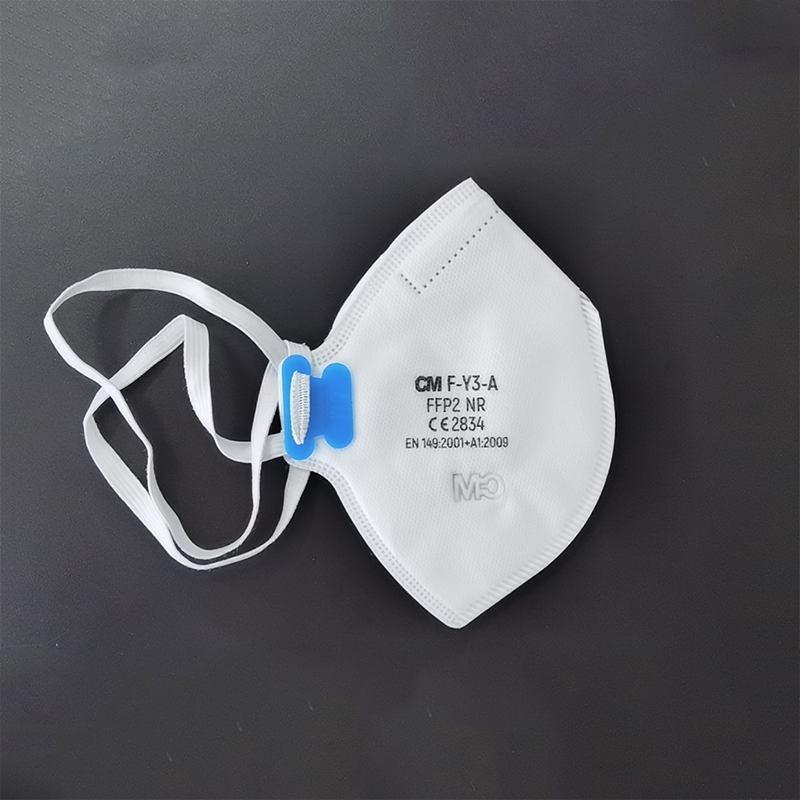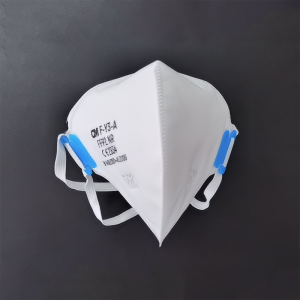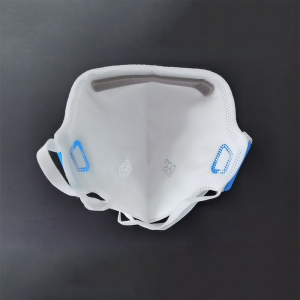
Surgical face mask F-Y3-A EO sterilized
Materials
• Surface: 60g non woven fabric
• Second layer: 45g hot air cotton
• Third layer: 50g FFP2 filter material
• Inner layer: 30g PP non woven fabric
Approvals and Standards
• EU Standard: EN14683:2019 type IIR
• EU Standard: EN149:2001 FFP2 Level
• License for the manufacturing of industrial products
Validity
• 2 years
Use for
• Used to protect against particulate matter generated during processing such as grinding, sanding, cleaning, sawing, bagging, or processing of ore, coal, iron ore, flour, metal, wood, pollen, and certain other materials.
Storage Condition
• Humidity<80%, well-ventilated and clean indoor environment without corrosive gas
Country of Origin
• Made in China
| Description |
Box |
Carton |
Gross weight |
Carton size |
| Surgical face mask F-Y3-A EO sterilized |
20pcs |
400pcs |
9kg/Carton |
62x37x38cm |

This product complies with the requirements of EU Regulation (EU) 2016/425 for Personal Protective Equipment and meets the requirements of European standard EN 149:2001+A1:2009. At the same time, it complies with the requirements of EU Regulation (EU) MDD 93/42/EEC on medical devices and meets the requirements of European Standard EN 14683-2019+AC:2019.
User instructions
The mask must be selected properly for intended application. An individual risk assessment must be evaluated. Check the respirator that is undamaged with no visible defects. Check the expiry date that has not been reached (see the packaging). Check the protection class that is appropriate for the product used and its concentration. Do not use the mask if a defect is present or the expiry date has been exceeded. Failure to follow all instructions and limitations could seriously reduce the effectiveness of this particle filtering half mask and could lead to illness, injury or death. A properly selected respirator is essential, before occupational use, the wearer must be trained by the employer in the correct use of the respirator in accordance with applicable safety and health standards.
Intended use
This product is limited to surgical operations and other medical environment where infectious agents are transmitted from staff to patients. The barrier should also be effective in reducing oral and nostril discharge of infectious substances from asymptomatic carriers or clinically symptomatic patients and in protecting against solid and liquid aerosols in other environments.
Using method
1. Hold the mask in hand with the nose clip up. Allow head harness to hang freely.
2. Position the mask under the chin covering mouth and nose.
3. Pull the head harness over the head and position behind head, adjust the length of head harness with adjustable buckle to feel as comfortable as possible.
4. Press soft nose clip to conform snugly around the nose.
5. To check fit, cup both hands over the mask and exhale vigorously. If air flows around nose, tighten the nose clip. If air leaks around the edge, reposition the head harness for better fit. Re-check the seal and repeat the procedure until the mask is sealed properly.

Appropriate use of face masks is important. The face mask should completely cover the face from the bridge of the nose down to the chin. The direct advantage of the headband straps is that the mask fits and forms closer to the face, thus less unfiltered air can enter from any gaps or seams around the edges of the mask.
Clean hands with soap and water or alcohol-based hand sanitiser before putting on and taking off the face mask. When taking off the face mask, remove it from behind, avoiding touching the front side. Dispose the face mask safely if it is disposable. Wash your hands or apply alcohol-based hand sanitiser immediately after removing the face mask. Washable, reusable face should be washed as soon as possible after each use, using common detergent at 60 °C. Campaigns for the appropriate use of face masks may improve the effectiveness of the measure.
Recommendations and guidelines
● It should be ensured that medical face masks (and respirators) are conserved and prioritised for use by healthcare providers, especially given the current shortages of respiratory personal protective equipment reported across EU/ European Economic Area EEA countries.
● The use of face masks may provide a false sense of security leading to suboptimal physical distancing, poor respiratory etiquette and hand hygiene – and even not staying at home when ill.
● There is a risk that improper removal of the face mask, handling of a contaminated face mask or an increased tendency to touch the face while wearing a face mask by healthy persons might actually increase the risk of transmission.
● The use of face masks in the community should be considered only as a complementary measure and not as a replacement for established preventive measures, for example physical distancing, respiratory etiquette, meticulous hand hygiene and avoiding touching the face, nose, eyes and mouth.
● Appropriate use of face masks is key for the effectiveness of the measure and can be improved through education campaigns.
● Recommendations on the use of face masks in the community should carefully take into account evidence gaps, the supply situation, and potential negative side effects.










